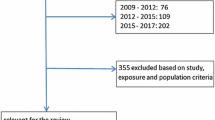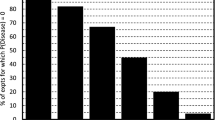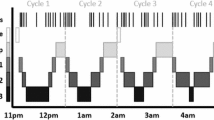Abstract
Some people who reside in proximity to wind turbines complain of a range of adverse health impacts. These include tinnitus, raised blood pressure, heart palpitations, tachycardia, stress, anxiety, vertigo, dizziness, nausea, blurred vision, fatigue, cognitive dysfunction, headaches, ear pressure, exacerbated migraine disorders, motion sensitivity, inner ear damage and sleep deprivation. This article begins with a historical review of prognoses such as Vibroacoustic Disease and Wind Turbine Syndrome which were proposed to explain the reported health symptoms and the hypothesised link to the emission of infrasound from wind turbines. A review of noise measurements at wind turbine sites conducted by various investigators shows that the level of infrasound is below the threshold of hearing. Notwithstanding, others postulate that stimulation by infrasound of the otolith organs causes nauseogenic symptoms or that stimulation of the outer hair cells, which are said to be particularly sensitive to infrasound frequencies, explains the symptoms. A review of social surveys is undertaken of self-reported health effects attributable to wind turbine noise, including the effects of sleep disturbance. A description is finally provided of physical exploration studies which subject participants to infrasound and measure their response.












Adapted from http://flipper.diff.org/app/items/info/6238


Similar content being viewed by others
Notes
Section 2.9 reference [1].
Section 2.14 ibid.
An ill wind blowing. John van Tiggelen. SMH Good Weekend, 4 Sept 2004.
Section 1.12 ibid.
Reference [3].
Section 2.37 Reference [1].
Submission 338 by Robert Thorne ibid.
Reference [7] op cit.
Wind Farm’s noise is worst aspect. Letter to the Editor from Caroline Kerkham, Llangwyryfon, Dyfed, Wales. Daily Telegraph UK, 21 October 1993.
Health check for Waubra Wind Farm. The Ballarat Courier. 15 October 2009.
The actual value of the conversion factor depends upon the distribution of the PSD spectrum levels in the individual bands clustered around the tone. Theoretically, if all the energy were located in one spectral band, then the conversion factor would be 18 dB and therefore a PSD level of 90 dB represents a sound pressure level of (90–18\(=\)) 72 dB re 20 uPa. On the other hand, by way of example, if the energy were equally distributed across three contiguous bands, then the conversion factor would be 13 dB. There is insufficient information provided in the original reference to enable an accurate determination of the conversion factor to be made.
References
The Senate Select Committee on Wind Turbines Final Report, Aug 2015. http://www.aph.gov.au/Parliamentary_Business/Committees/Senate/Wind_Turbines/Wind_Turbines/Final_Report
2016 Annual Report of the National Wind Farm Commissioner, 31 Mar 2017. https://www.nwfc.gov.au/publications/annual-report-2016
Clean Energy Australia Report 2015. Clean Energy Council. https://www.cleanenergycouncil.org.au/policy-advocacy/reports/clean-energy-australia-report.html
Tonin, R.: Quiet road pavements: design and measurement—state of the art. Acoust. Aust. 44, 235–247 (2016)
Wind Turbines and Health. A rapid review of the evidence. National Health and Medical Research Council, July 2010. https://www.nhmrc.gov.au/guidelines-publications/eh53
Council of Canadian Academies: Understanding the evidence: wind turbine noise. The Expert Panel on Wind Turbine Noise and Human Health, Council of Canadian Academies, Ottawa, ON, 2015. http://www.scienceadvice.ca/uploads/eng/assessments%20and%20publications%20and%20news%20releases/wind-turbine-noise/WindTurbineNoiseFullReportEn.pdf
The Senate Select Committee on Wind Turbines, Senate-Wednesday, 10 June 2015. http://parlinfo.aph.gov.au/parlInfo/search/display/display.w3p;query=Id%3A%22committees%2Fcommsen%2F34382052-8907-4b85-a0af-1a3fb4be884c%2F0000%22
Hansen, C.H.: Collateral Damage, Engineering Ethics and Wind Farms. Editorial SV Magazine, April (2016)
Cooper, S.: Wind farm noise—an ethical dilemma for the australian acoustical society. Acoust. Aust. 40, 139–143 (2012)
Victorian Planning Provisions 52.32 Wind Energy Facility, July 2016. https://www.planning.vic.gov.au/planning-permit-applications/specific-permit-topics/wind-energy-facilities
Minister Approved Statewide Wind Farms Development Plan Amendment. Gazetted, 18 Oct 2012. https://www.sa.gov.au/__data/assets/pdf_file/0020/17660/DPA_Minister_Approved_Statewide_Wind_Farms_DPA_Gazetted_18_October_2012.PDF
Wind Energy Guideline For State significant wind energy development. NSW Government Department of Planning and Environment, Dec 2016. http://www.planning.nsw.gov.au/~/media/Files/DPE/Guidelines/wind-energy-guideline-for-state-significant-wind-energy-development-2016-12.ashx
Kelley, N.D., McKenna, H.E., Hemphill, R.R., Etter, C.L., Garrelts, R.L., Linn, N.C.: Acoustic Noise Associated with the MOD-1 Wind Turbine: Its Source, Impact, and Control. U.S. Department of Energy. Solar Energy Research Institute, Feb 1985. http://www.nrel.gov/docs/legosti/old/1166.pdf
Branco, N.A.A.C., Alves-Pereira, A.M.: Vibroacoustic disease. Noise Health 6(23), 3–20 (2004)
Alves-Pereira, A.M., Branco, N.A.A.C.: Vibroacoustic disease: biological effects of infrasound and low-frequency noise explained by mechanotransduction cellular signalling. Prog. Biophys. Mol. Biol. 93, 256–279 (2007)
Alves-Pereira, A.M., Branco, N.A.A.C.: Public health and noise exposure: the importance of low frequency noise. Inter-noise 2007, Istanbul, Turkey, 28–31 Aug 2007
Alves-Pereira, A.M., Branco, N.A.A.C.: In-home wind turbine noise is conducive to vibroacoustic disease. In: Second International Meeting on Wind Turbine Noise, Lyon, France, 20–21 Sept 2007
Waubra Wind Farm Planning Permit Call Ins. Application Nos 05/0150 and 05/0152. Panel Report, Mar 2005. http://www.austlii.edu.au/cgi-bin/sinodisp/au/cases/vic/PPV/2005/26.html?stem=0&synonyms=0&query=waubra%20wind%20farm&nocontext=1
Van den Berg, F.: The sounds of high winds. Thesis, May 2006. http://www.rug.nl/research/portal/files/14548137/17_thesis.pdf
The Measurement of Low Frequency Noise at Three UK Wind Farms. Hayes Mckenzie Partnership Ltd. Department of Trade and Industry (2006). http://webarchive.nationalarchives.gov.uk/+/http:/www.berr.gov.uk/whatwedo/energy/sources/renewables/explained/wind/onshore-offshore/page31267.html
Pierpont, N.: Wind Turbine Syndrome. K-Selected Books, Santa Fe (2009)
Tonin, R.: Sources of wind turbine noise and sound propagation. Acoust. Aust. 4(1) (2012)
Oerlemans, S., Lopez, B.M.: Localisation and quantification of noise sources on a wind turbine. In: First International Meeting on Wind Turbine Noise, Berlin 17–18 Oct 2005
Doolan, C.: Wind turbine noise mechanisms and some concepts for its control. In: Proceedings of Acoustics (2011)
Oerlemans, S., Sijtsma, P., López, B.M.: Location and quantification of noise sources on a wind turbine. J. Sound Vib. 299, 869–883 (2007)
Bullmore, A., Jiggins, M., Cand, M., Smith, M., Von-Hunerbein, S.: Wind turbine amplitude modulation: research to improve understanding as to its cause and effect. In: Fourth International Meeting on Wind Turbine Noise, Rome, Italy, 12–14 Apr 2011
Bertagnolio, F., Madsen, H.A., Fishcer, A., Bak, C.: Experimental characterization of stall noise toward its modelling. In: 6th International Conference on Wind Turbine Noise, Glasgow, 20–23 Apr 2015
Oerlemans, S., Schepers, G.: Prediction of wind turbine noise and comparison to experiment. In: Second International Meeting on Wind Turbine Noise, Lyon, France, 20–21 Sept 2007
Jakobsen, J.: Infrasound emission from wind turbines. J. Low Freq. Noise Vib. Act. Control 24(3), 145–155 (2005)
Hansen, K., Zajamsek, B., Hansen, C.H.: Evaluation of secondary windshield designs for outdoor measurement of low frequency noise and infrasound. In: 5th International Conference on Wind Turbine Noise, Denver, 28–30 Aug 2013
Tachibana, H., Fukushima, A., Ochiai, H.: Modelling of house filter for wind turbine noise. In: 6th International Conference on Wind Turbine Noise, Glasgow, Apr 2015
The results of an Acoustic Testing Program: Cape bridgewater wind farm. The Acoustic Group, 26 Nov 2014. http://www.pacifichydro.com.au/files/2015/01/Cape-Bridgewater-Acoustic-Report.pdf
Zajamsek, B., Hansen, K., Doolan, C.J., Hansen, C.H.: Characterisation of wind farm infrasound and low-frequency noise. J. Sound Vib. 370, 176–190 (2016)
Rao, B.K.N.: Infrasonic noise inside road vehicles and its effect on people. Shock Vib. Dig. 7(4), 65–69 (1975)
Moller, H., Pedersen, C.S.: Hearing at low and infrasonic frequencies. Noise Health 23(6), 37–57 (2004)
Watanabe, T., Moller, H.: Low frequency hearing thresholds in pressure field and in free field. J. Low Freq. Noise Vib. 9(3), 106–115 (1990)
ISO 226:2003 Acoustics—Normal equal-loudness-level contours
ISO 7196:1995 Acoustics—frequency-weighting characteristic for infrasound measurements
Turnbull, C.P., Turner, J.P.: Measurement of infrasound from wind farms and other sources. In: Fourth International Meeting on Wind Turbine Noise, Rome, Italy, 12–14 April 2011
Walker, B., Hessler, G.F., Hessler, D.M., Rand, R., Schomer, P.A.: Cooperative Measurement survey and analysis of low frequency and infrasound at the shirley wind farm in Brown County, Wisconsin. Public Service Commission of Wisconsin (2012). https://apps.psc.wi.gov/vs2015/erf_view/viewdoc.aspx?docid=178200
Waterloo Wind Farm: Environmental noise study. South Australian Environment Protection Authority (2013). http://www.epa.sa.gov.au/environmental_info/noise/types_of_noise/wind_farms/waterloo_wind_farm_environmental_noise_study
Tachibana, H., Hiroo, Y., Fukushima, A.: Assessment of wind turbine noise in immission areas. In: 5th International Conference on Wind Turbine Noise, Denver, 28–30 Aug 2013
Moorhouse, A.T., Waddington, D.C., Adams, M.D.: A procedure for the assessment of low frequency noise complaints. J. Acoust. Soc. Am. 126(3), 1131–1141 (2009)
Bell, A.: Constructive interference of tonal infrasound from synchronised wind farm turbines: evidence and implications. Acoust. Aust. 42(3), 212–218 (2014)
Leventhall, G.: Infrasound rumbles on. Acoust. Bull. 38(2) (2013)
Hartman, R.S.: The adverse health impacts of industrial wind turbines: a scientific response to “it’s all in your head”, 5 Apr 2013. https://pdfs.semanticscholar.org/3468/64c8fa44090a1a08d54f9cc049301ab625d3.pdf
Evans, T., Cooper, J., Lenchine, V.: Infrasound levels near windfarms and in other environments. South Australia Environmental Protection Authority (2013). http://www.epa.sa.gov.au/files/477912_infrasound.pdf
Infrasound measurements from wind farms and other sources. Sonus, Nov 2010. http://www.goyder.sa.gov.au/webdata/resourfces/iles/Attachment_5.pdf
Stead, M., Cooper, J., Evans, T.: Comparison of infrasound measured at people’s ears when walking to that measured near wind farms. Acoust. Aust. 42(3), 197–203 (2014)
Leventhall, G.: Infrasound and the ear. In: 5th International Conference on Wind Turbine Noise, Denver, 28–30 Aug 2013
Salt, A.N.: Letter to Chairman of Association of Australian Acoustical Consultants, 18 Sept 2013. https://s3.amazonaws.com/windaction/attachments/1998/Warpenius.pdf
Schomer, P.D., Erdreich, J., Pamidighantam, P.K., Boyle, J.H.: A theory to explain some physiological effects of the infrasonic emissions at some wind farm sites. J. Acoust. Soc. Am. 137(3), 1356–1365 (2015)
Salt, A.N., Lichtenhan, J.T.: How does wind turbine noise affect people? Acoust. Today 10(1) (2014)
Brownell, W.E.: What is electromotility?—the history of its discovery and its relevance to acoustics. Acoust. Today 13(1) (2017)
Bolin, K., Bluhm, G., Eriksson, G., Nilsson, M.E.: Infrasound and low frequency noise from wind turbines: exposure and health effects. Environ. Res. Lett. 6, 035103 (2011)
Van den Berg, F.: An overview of residential health effects in relation to wind turbine noise. In: Fourth International Meeting on Wind Turbine Noise, Rome, Italy 12–14 Apr 2011
Pedersen, E.: Health aspects associated with wind turbine noise—results from three field studies. Noise Control Eng. J. 59(1), 47–53 (2011)
Shepherd, D., McBride, D., Welch, D., Dirks, K.N., Hill, E.M.: Evaluating the impact of wind turbine noise on health-related quality of life. Noise Health 13(54), 333–339 (2011)
Nissenbaum, M.A., Aramini, J.J., Hanning, C.D.: Effects of industrial wind turbine noise on sleep and health. Noise Health 14(60), 237–243 (2012)
Kuwano, S., Yano, T., Kageyama, T., Sueoka, S., Tachibana, H.: Social survey on wind turbine noise in Japan. Noise Control Eng. J. 62(6), 503–520 (2014)
Schomer, P., Fidell, S.: Introductory remarks for special issue on wind turbine noise. J. Acoust. Soc. Am. 139(3), 1430 (2016)
Crichton, F., Dodd, G., Schmid, G., Gamble, G., Petrie, K.J.: Can expectations produce symptoms from infrasound associated with wind turbines. Health Psychol. 33(4), 360–364 (2014)
Crichton, F., Dodd, G., Schmid, G., Gamble, G., Petrie, K.J.: The power of positive and negative expectations to influence reported symptoms and mood during exposure to wind farm sound. Health Psychol. 33(12), 1588–1592 (2014)
Tonin, R., Brett, J., Colagiuri, B.: The effect of infrasound and negative expectations to adverse pathological symptoms from wind farms. J. Low Freq. Noise Vib. Act. Control 35(1), 77–90 (2016)
Acknowledgements
The author declares no funding was provided in respect of the preparation of this article and the author has no association with any wind farm proponents.
Author information
Authors and Affiliations
Corresponding author
Rights and permissions
About this article
Cite this article
Tonin, R. A Review of Wind Turbine-Generated Infrasound: Source, Measurement and Effect on Health. Acoust Aust 46, 69–86 (2018). https://doi.org/10.1007/s40857-017-0098-3
Received:
Accepted:
Published:
Issue Date:
DOI: https://doi.org/10.1007/s40857-017-0098-3




